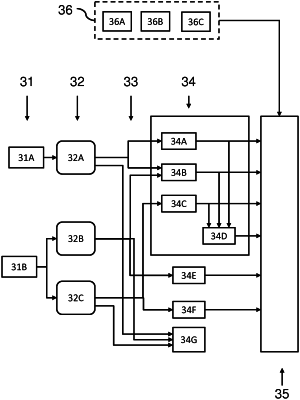| CPC G08B 31/00 (2013.01) [G16H 20/30 (2018.01); G16H 40/63 (2018.01)] | 15 Claims |

|
1. A computer-implemented method of predicting the occurrence of a critical alarm for a subject undergoing physiological parameter monitoring, the computer-implemented method comprising:
receiving a non-critical alarm signal indicating that the subject has entered a clinically undesirable state at a time of occurrence; and
in response to the non-critical alarm signal:
obtaining a set of one or more pre-alarm values derived from and/or comprising one or more values of at least one monitored physiological parameter of the subject collected within a pre-alarm time window (TW1) of a first predetermined length, wherein the start time (ttw) of the pre-alarm time window depends upon the time of occurrence (to) of the non-critical alarm signal and wherein the pre-alarm time window ends before or at the time of occurrence of the non-critical alarm signal; and
processing, using a machine-learning algorithm, the set of one or more pre-alarm values to generate a predictive indicator indicating a probability that the non-critical alarm signal will be followed, within a post-alarm time window (TW2), by a critical alarm signal indicating that the subject has entered a clinically actionable state,
wherein the post-alarm time window is of a second predetermined length and begins at the time of occurrence of the non-critical alarm signal.
|